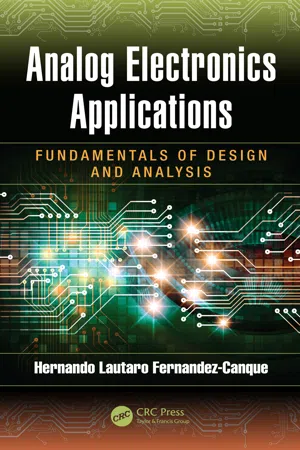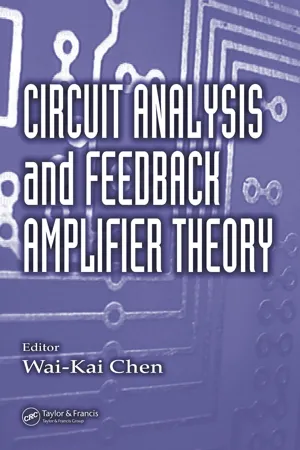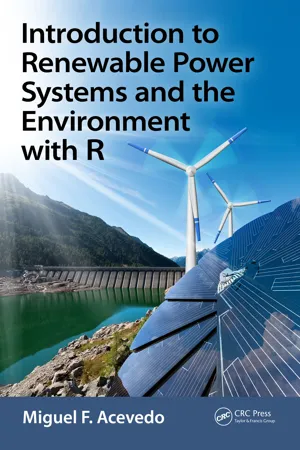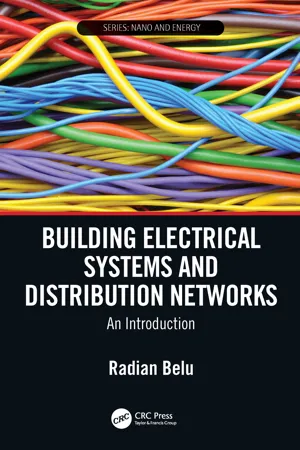Physics
Current Source
A current source is a device or component that provides a constant electric current regardless of the voltage across it. It is a fundamental concept in electrical engineering and circuit analysis, often represented by a symbol with an arrow indicating the direction of the constant current flow. Current sources are used in various electronic circuits and systems to ensure a stable and predictable flow of current.
Written by Perlego with AI-assistance
Related key terms
Related key terms
1 of 4
Related key terms
1 of 3
5 Key excerpts on "Current Source"
- eBook - ePub
Analog Electronics Applications
Fundamentals of Design and Analysis
- Hernando Lautaro Fernandez-Canque(Author)
- 2016(Publication Date)
- CRC Press(Publisher)
As in the case of ideal voltage source, the concept of ideal Current Source is a useful concept in the analysis of electric circuits. An ideal Current Source has constant current independent of voltage across the terminals.Figure 2.21 shows an ideal dc Current Source and its output characteristics.2.6.4.2Practical Current SourceAs in the case of a voltage source, a practical Current Source can be represented by adding external passive components to represent losses. In the case of a practical Current Source, an internal resistor is added in parallel to an ideal Current Source.A practical Current Source has a terminal current, which depends on of the value of the load voltage V. Figure 2.22 shows a practical Current Source and its output characteristics.FIGURE 2.21 Ideal dc Current Source and its output characteristics.FIGURE 2.22 Practical Current Source and its output characteristics.2.7ELECTRIC CIRCUITS/NETWORKSNow if we combine passive components and active components then we create an electric circuit. A circuit is a combination of active and passive elements joined at terminal points providing at least one closed path through which charge can flow.Let us look at a very simple circuit or network consisting in only two elements: a passive element and an active element connected as shown in Figure 2.23 .The active component, in this case the voltage source, is known as the emf. The emf represents the driving influence that causes a current to flow. The energy transferred due to the passage of unit charge between two points in a circuit is known as the potential difference (pd).The emf is always active in that it tends to produce an electric current in a circuit. A pd may be either passive or active. A network or a circuit is said to be passive if it contains no source of emf. A network or circuit is said to be active if it contains one or more of emf.Now let us see what happens in this simple circuit shown in Figure 2.23 - eBook - ePub
- Wai-Kai Chen, Wai-Kai Chen(Authors)
- 2018(Publication Date)
- CRC Press(Publisher)
1 Fundamental Circuit Concepts 1.1 The Electrical CircuitCurrent and Current Polarity • Energy and Voltage • Power1.2 Circuit Classifications • Linear vs. Nonlinear • Active vs. Passive • Time Varying vs. Time Invariant • Lumped vs. DistributedJohn Choma, Jr. University of Southern California 1.1 The Electrical CircuitAn electrical circuit or electrical network is an array of interconnected elements wired so as to be capable of conducting current. As discussed earlier, the fundamental two-terminal elements of an electrical circuit are the resistor, the capacitor, the inductor, the voltage source, and the Current Source. The circuit schematic symbols of these elements, together with the algebraic symbols used to denote their respective general values, appear in Figure 1.1 .As suggested in Figure 1.1 , the value of a resistor is known as its resistance, R, and its dimensional units are ohms. The case of a wire used to interconnect the terminals of two electrical elements corresponds to the special case of a resistor whose resistance is ideally zero ohms; that is, R = 0. For the capacitor in Figure 1.1(b) , the capacitance, C, has units of farads, and from Figure 1.1(c) , the value of an inductor is its inductance, L, the dimensions of which are henries. In the case of the voltage sources depicted in Figure 1.1(d) , a constant, time invariant source of voltage, or battery, is distinguished from a voltage source that varies with time. The latter type of voltage source is often referred to as a time varying signal or simply, a signal. In either case, the value of the battery voltage, E, and the time varying signal, v(t), is in units of volts. Finally, the Current Source of Figure 1.1(e) has a value, I, in units of amperes, which is typically abbreviated as amps.Elements having three, four, or more than four terminals can also appear in practical electrical networks. The discrete component bipolar junction transistor (BJT), which is schematically portrayed in Figure 1.2(a) , is an example of a three-terminal element, in which the three terminals are the collector, the base, and the emitter. On the other hand, the monolithic metal-oxide-semiconductor field-effect transistor (MOSFET) depicted in Figure 1.2(b) - eBook - ePub
Circuit Analysis with PSpice
A Simplified Approach
- Nassir H. Sabah(Author)
- 2017(Publication Date)
- CRC Press(Publisher)
Section 3.6 ).The fact that an ideal Current Source maintains the specified current iSRCthrough the source irrespective of the voltage v across the source means that the plot of i as a function of v for the source is a horizontal line displaced by iSRCfrom the v-axis (Figure 2.11 a). The conventional symbol for an ideal, independent Current Source is a circle with an arrow that points in the assigned positive direction of source current iSRC(Figure 2.11 b); that is, if the value of iSRCis a positive quantity, iSRCis in the direction of the arrow. The symbol of Figure 2.11 c will be used in this book for a dc, ideal, independent Current Source, for clarity when using such sources. The polarity of the battery in the source symbol is that of a voltage rise in the direction of the arrow, which is appropriate for power delivery.The following features of an ideal, independent Current Source are exactly analogous to those of an ideal, independent voltage source:FIGURE 2.11 Ideal, independent Current Source. (a) i–v relation, (b) the symbol for an ideal, independent Current Source, (c) symbol for an ideal, independent, dc Current Source, and (d) power delivered or absorbed by an ideal, independent Current Source based on the relative signs of iSRC and v.- iSRC, and the voltage v across the source, can be positive, negative, or zero.
- For a given iSRC, the value and sign of v depend on both iSRCand the circuit to which the source is connected.
- An ideal Current Source can deliver or absorb power, depending on the relative directions of iSRCand v (Figure 2.11 d).
- iSRCis in general a function of time but is constant with respect to the voltage across the source. That is, at any instant of time, iSRCis independent of the voltage across the source, even though iSRC
- Miguel F. Acevedo(Author)
- 2018(Publication Date)
- CRC Press(Publisher)
Conventions. Current flow direction is opposite to electron flow. Potential drops from positive to negative.The diagram of Figure 3.1 shows the typical situation where power is consumed by a load when the current is drawn from the source or supply at a rated voltageVs, which remains nearly constant as we change the load. This is a type of source is called a voltage source (Figure 3.2 ). We can distinguish another type of source, a Current Source , which maintains a nearly constant currentIs, regardless of voltage (Figure 3.2 ). Ideally, a voltage source would plot out as a vertical line on a graph of current versus voltage (the I-V plane), whereas a Current Source would plot out as a horizontal line on the I-V plane. In reality, voltage provided from a voltage source may drop as current increases, and current provided by a Current Source may diminish as voltage increases (Figure 3.2 ). These effects are due to internal losses (e.g., voltage drop in the voltage source) occurring at higher power demand from the load or higher value of the product VI .Figure 3.2Voltage and Current Sources. The bottom graphs in the voltage-current (I-V) plane illustrate the departure from constant voltage (left-hand side) and departure from constant current (right-hand side).We provide DC power using a variety of processes and devices. Two important ones are to use chemical reactions, e.g., batteries and fuel cells, and to use radiant energy, e.g., photovoltaic (PV) cells. Determining the nature of the source, whether voltage and Current Source, may be complicated. A battery normally behaves as a voltage source, but a fuel cell and a PV cell may exhibit current or voltage source behavior depending on the voltage and current range. For example, a PV cell behaves as a nonideal Current Source for lower values of voltage and can behave as a nonideal voltage source for higher values of voltage. Keep in mind that the current and voltage source concepts are just models that we can use to analyze real sources.- eBook - ePub
Building Electrical Systems and Distribution Networks
An Introduction
- Radian Belu(Author)
- 2020(Publication Date)
- CRC Press(Publisher)
2 Review of Electric Circuits and Power System Basics2.1INTRODUCTION TO ELECTRIC CIRCUIT REVIEW
The study of electric circuits covers the fundamental phenomenon of electric charge carrier flows. The fundamental quantities of current and voltage are used to describe how rapidly charged particles move in a circuit and in what way they do so in the circuit. Current is sometimes referred to as the “through” quantity and voltage as the “across” quantity. In a physical context, current is the flow of electric charge through a component or apparatus, whereas voltage is the potential difference between two points in a circuit. Current flows from high potential to low potential. In particular, we define the current, i(t), flowing in a component or apparatus as the amount of charge passing through that component or apparatus per unit of time. Denoting charge by q(t), we may write current i(t) as:i ( t ) =d q ( t )d t(2.1) Two other important quantities frequently used to describe physical systems are power and energy. If a small quantity of electric charge Δq is displaced from a point A to a point B, then the change in its potential energy, or the work done, is equal to V·Δq, where V is the voltage between A and B. The amount of work done per unit of time, the time rate, is called power, and is usually denoted by P, defined as:P =limΔ t → 0= VV ⋅ Δ qΔ td qd t(2.2) Current unit is the ampere (A), for the voltage is volt (V), for the energy is joule (J), and for the power is watt (W). Prefixes are often used to emphasize the significant figures when these magnitudes are too large or too small. Common engineering prefixes and their corresponding multipliers are given in Table 2.1
Index pages curate the most relevant extracts from our library of academic textbooks. They’ve been created using an in-house natural language model (NLM), each adding context and meaning to key research topics.
Explore more topic indexes
Explore more topic indexes
1 of 6
Explore more topic indexes
1 of 4




